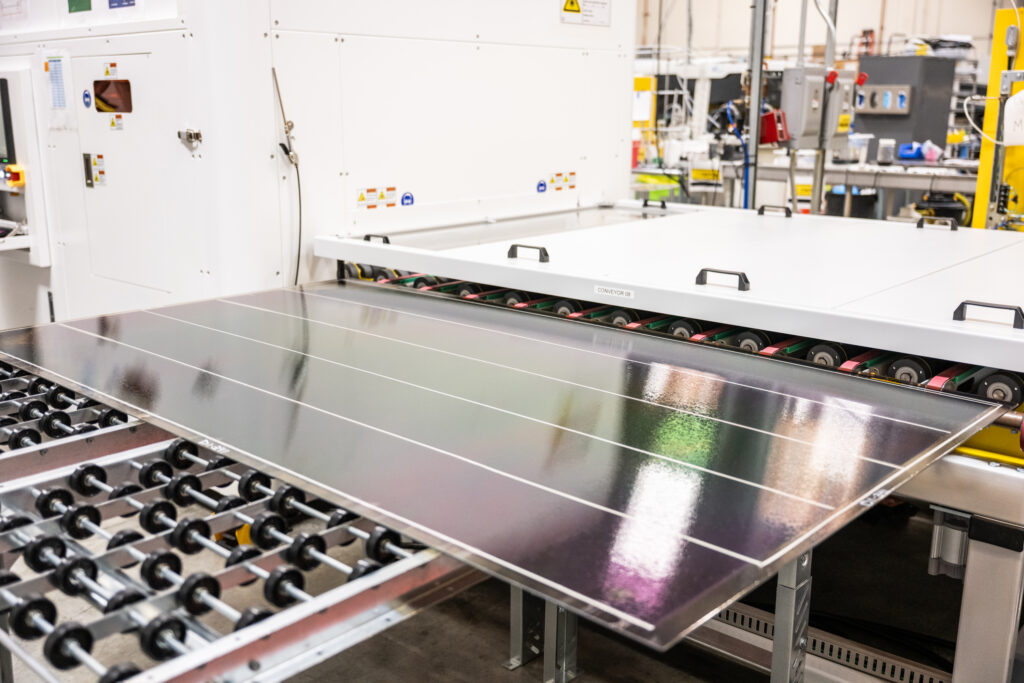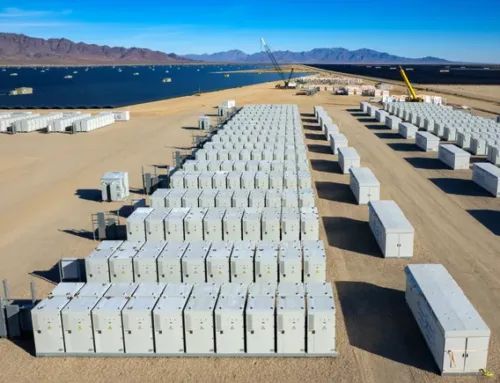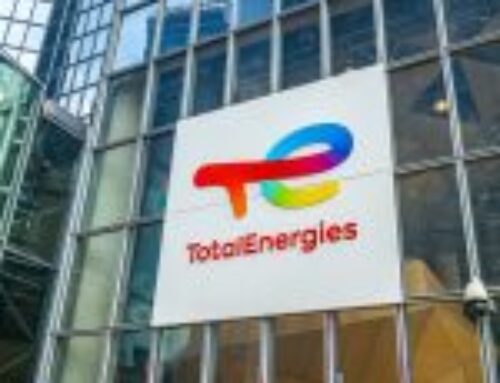Next-Generation Panels Recharge Utility Solar Economics
April 24, 2025
A massive surge in energy demand is about to reshape the U.S. power landscape, presenting an opportunity for forward-thinking utilities. The nation’s energy demands are poised to explode, as everything from the enormous data centers powering the artificial intelligence (AI) boom to broad electrification efforts increase the need for electricity.
According to one analysis, U.S. electricity needs are expected to go up by 16% in the next five years, an enormous jump for an industry that saw just 1% annual demand growth for the past two decades.
COMMENTARY
Utilities must meet this demand no matter what. However, fossil fuels alone won’t close the gap, and solar energy is increasingly meeting energy demand. Last year, the U.S. power grid added more solar energy capacity than any other resource. Even so, utility-scale solar faces increasing cost pressures that threaten its profitability and undermine its ability to scale rapidly enough to meet the projected surge in electricity demand.
The cost pressures are multifaceted. Available land is becoming less plentiful, and more expensive. At the same time, module and other component costs are increasing, impacted by tariffs on imported components from Europe or Asia. Specifically, tariffs of 10% to 20% could push installation costs up further, squeezing project economics and making solar less affordable as a utility-scale power solution.
Despite these challenges, utility-scale solar power remains highly competitive, often achieving lower generation costs than conventional power sources. Meeting clean energy goals requires navigating these economic challenges and international policies while accelerating technology adoption.
Innovation as an Economic Lever
Increasing module efficiency is the best strategy to counteract rising land and component costs and mitigate tariff impacts. Today, in the laboratory, tandem technologies such as perovskite/silicon (Figure 1) are achieving efficiencies much higher than traditional silicon solar modules. As these technologies come to market they will provide significant benefits.

For a project that occupies a fixed plot of land, higher efficiency solar panels will generate more power from the same footprint. Since a large portion of project costs are either largely fixed (e.g. office work, permitting) or proportional to land area (e.g. total length of trackers and conductor home runs), higher efficiency greatly improves project economics.
Table 1 details modeled installation costs using the National Renewable Energy Laboratory’s (NREL) benchmark model from Q1 2023. The first column shows NREL’s modeled costs, assuming a typical 21.5% utility module. The second column shows modeled costs using a nominal 27% tandem module, which increases system output from 300 MW to 377 MW while keeping land area the same. This equates to a 26% increase in capacity from the same site.

Tandems are expected to have a cost-per-watt nearly equal to today’s silicon modules, because while tandems (Figure 2) add some cost that cost is offset by the extra watts. While costs for modules and inverters scale on a per-watt basis, costs for structural BOS (trackers), EBOS (cable runs, disconnects), office work, fieldwork (labor), and other costs (e.g. permitting) are largely fixed, or at least only weakly dependent on wattage. The result is a substantial installed-cost savings on a per-watt basis, of $152/kWdc ($0.152/W).
In addition to the installed-cost savings shown in Table 1, module efficiency improves operational costs on a per-watt basis, such as cleaning and land-lease, which are approximately proportional to land area. The reduction in upfront costs combined with lower operational expenses push the total LCOE (levelized cost of energy) improvement to nearly 15%, dramatically changing the rules of what is considered a viable project.

As an added bonus, all else being equal, higher efficiency panels run cooler and therefore have higher yield (kWh/kWp). This is due to simple thermodynamics: if a 2m2 panel has 2,000 W of incident sunlight and generates 500 W of electricity instead of 400 W, there is 100 W less power to dissipate as heat to the environment. Assuming a temperature coefficient of 0.34%/oC, operating just three degrees cooler can add another 1% of the energy yield from the same plant. This further increases the value proposition for high-efficiency tandems.
Addressing Legacy Challenges and Reliability
The utility solar sector includes legacy assets, some of which are underperforming due to age. Repowering these sites presents a significant opportunity to improve performance, increase power density and electricity generation, and take advantage of existing interconnection.
Upgrading from a legacy 17% efficient panel to a modern 22% efficient silicon panel may provide a benefit, but moving to higher efficiencies (e.g., 27% or higher with tandems) offers a step function improvement versus an incremental improvement. In other words, tandem technology has the potential to offer the crossover point at which a majority of older plants will become lucrative to be repowered.
One challenge facing the repowering of utility-scale solar projects is addressing the “form factor” issue. Panel sizes and mounting specifications have changed over time, and module manufacturers often no longer produce older form factors needed for direct replacement. Repowering economics today may hinge on whether it is possible to maintain the original panel form factor to avoid costly complete site overhauls involving racking and infrastructure replacement. Active glass tandem modules offer flexibility in dimensions coupled with compelling economics for either the reuse of existing infrastructure or starting new for repowering depending on what makes the most sense for a given site.
Meeting the Moment
The surge in U.S. electricity demand presents a critical challenge and a substantial opportunity for utilities. Solar is uniquely qualified to address this challenge and tandem technology will further accelerate a solution.
There are many headwinds challenging the economics of adding more solar to the grid, from rising land and component costs to potential tariff impacts. The technological innovation occurring in tandem perovskite solar modules offers a powerful solution to overcome these challenges.
The dramatic increase in solar panel efficiency these new tandem technologies bring to the solar industry unlock the potential to greatly enlarge the capacity of utility-scale power plants in the pipeline while growing the pool of viable projects, and making it economical to repower existing plants.
—Charlie Hasselbrink is chief technology officer at Caelux, a company utilizing perovskites to make solar energy more powerful and cost-effective.
Search
RECENT PRESS RELEASES
Related Post




